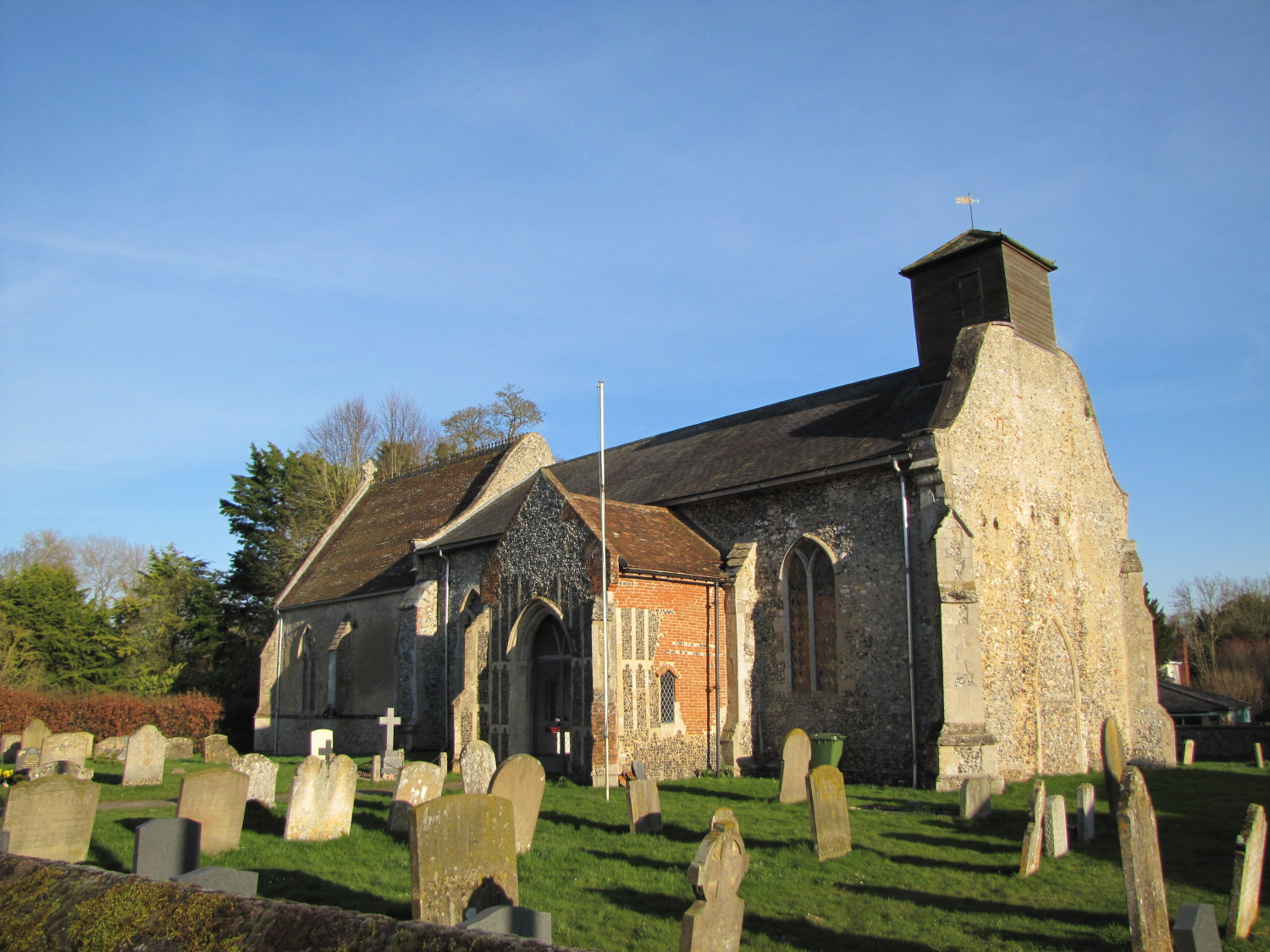History of St Mary's
The name of the village was "Brugeham" in 1050, and "Briggeham" in 1280. It means "Ham (settlement) by a bridge". It is likely to be a very ancient settlement, as the Peddar's Way forms the western boundary of the parish and the parish is crossed by the prehistoric drove road from Hockwold to the Thet. The village but not the church is mentioned in the Domesday Book (1086). However, there was undoubtedly a church here in Saxon days, for a priest lived here at the time of the Domesday Book, and a church is recorded in the Inquisitio Eliensis(a contemporary document).
Even earlier the village was given to the monks of Ely by Aelfwaru, a wealthy Saxon widow, in her will. She died in 1007.
There is no sign however of Saxon work in the present building, which is mainly 14th century 'decorated' work.
The north porch is the first part of the building approached by visitors. It was built during the 15th century. Despite being considerably repaired, mainly in brick, it is still a good example of split (knapped) flint and stone, producing the decorative effect called 'flushwork'.
The bell turret of wood at the west end of the nave houses one bell, of 1632. When the antiquary Tom Martin visited the church on January 17th 1735 he recorded "the steeple down", but it is not known when the tower fell. If there was a spire, it may have fallen onto the porch roof, which would explain its mixture of brick and flint repairs higher up.
The south doorway is probably 13th century and the °Y' traceried nave windows are about 1300. The chancel windows are in the slightly later (c. 1330) style of net like tracery, known as 'reticulated'.
In the north porch, notice the type of vaulting in the roof, which is called a tunnel vault.
The 15th century font is an unusually good example of the period. The upper of the two steps upon which it stands is traceried, and there are four lions against the stem. The carved designs round the bowl are as follows:
»North: a saint seated with a crozier (?) probably St. Etheldreda of Ely.
»Northeast: an angel holding a shield (design vanished).
»East: God the Father, supporting Christ crucified. The design was probably originally the Holy Trinity, but the dove, which represented the Holy Spirit, has disappeared.
St Mary's is Listed Grade 2* and is of national historic importance.

